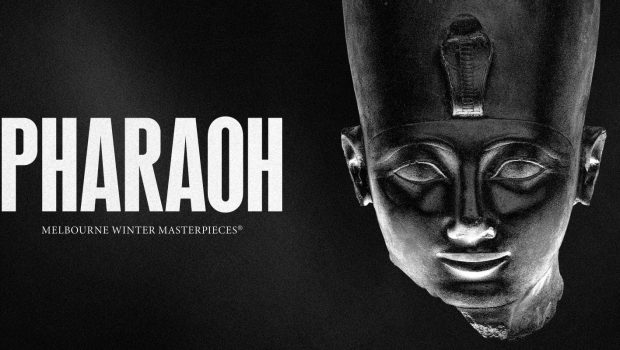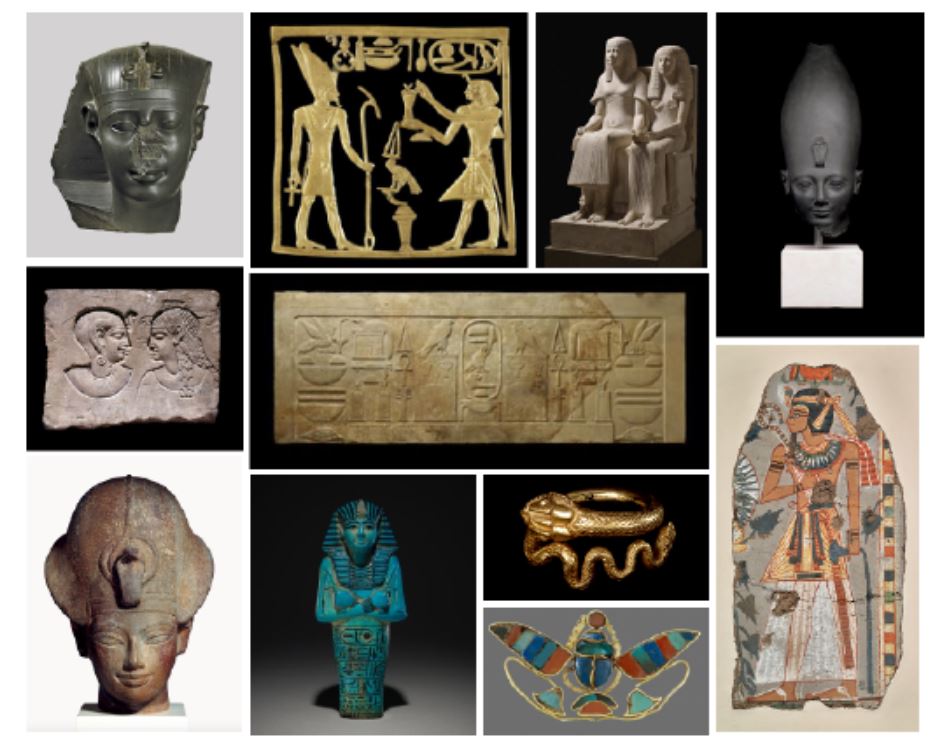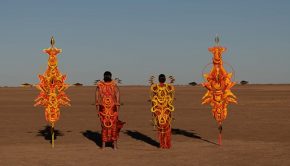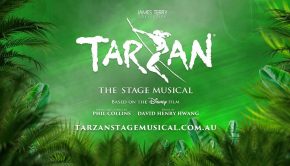2024 Melbourne Winter Masterpieces exhibition Pharaoh
The internationally exclusive blockbuster exhibition, Pharaoh, celebrates three thousand years of ancient Egyptian art and culture through more than 500 works on loan from the British Museum, including monumental sculpture, tomb and temple architecture, coffins and funerary objects, as well as a significant display of exquisite ancient Egyptian jewellery.
Curated especially for the National Gallery of Victoria by the British Museum as part of the Victorian Government’s Melbourne Winter Masterpieces® series, Pharaoh is the largest international exhibition the British Museum has ever presented in its 270-year history. With many works on display in Australia for the very first time, this Melbourne exclusive presentation constitutes the single largest ancient Egyptian exhibition ever mounted in this country.
Spanning from the 1st Dynasty (c.3000 BCE) to the Roman period (3rd century CE), Pharaoh explores the fascinating lives, myths and images of the successive rulers of ancient Egypt through exquisitely crafted examples of art, design and architecture. The works on display were commissioned by and celebrate some of Egypt’s most famous kings and queens, including the boy king Tutankhamun; Ramses II and Queen Nefertari; Khufu, builder of the Great Pyramid of Giza; as well as foreign leaders such as Alexander the Great.
From small sacred sculptures, to monuments of colossal scale, the pharaohs presented an idealised image of themselves as invincible warriors who defended Egypt and maintained the order of the universe. The exhibition will highlight the art and artistry of ancient Egypt and give audiences an appreciation of the artistic skill of ancient Egyptian sculptors, painters and craftspeople, whose lives were largely spent working in service of the Pharaoh.
Outstanding examples of sculpture, statuary and art featuring the iconic image of the pharaoh include:
- A superbly carved green siltstone Head of Tuthmose III, one of ancient Egypt’s most successful military pharaohs of the 18th Dynasty who expanded Egypt’s empire to its greatest extent. Wearing the tall white crown of Upper Egypt and cobra headdress (uraeus) – the consummate symbol of royalty – the head presents the timeless image of the Egyptian pharaoh.
- At just over 5 centimetres wide, the earliest object in the exhibition is a small ivory label depicting King Den of the 1st Dynasty, shown as a powerful ruler subduing his enemy with physical force. Even at this early period, c.3000 BCE, the pharaoh is depicted in a characteristic pose with royal regalia, an image that continued to be used by pharaohs for the next three millennia.
- A larger-than-life limestone statue of Ramses II (c.1279-1213 BCE) depicts one of ancient Egypt’s most famous kings as a high priest, making offerings to appease the gods in his capacity as the gods’ representative on earth. Ramses II was one of Egypt’s longest ruling pharaohs who had numerous wives, fathered more than eighty children and commissioned a vast number of temples, monuments and statuary for his own self-glorification.
- The Seated statue of Pharaoh Sety II, c.1200-1194 BCE, a grandson of Ramses II, is the most complete sculpture of a pharaoh in the British Museum’s collection to survive from ancient Egypt, offering audiences a rare chance to experience the exceptional craftsmanship of Egyptian sculptors.
The exhibition evokes the grandeur and monumental scale of ancient Egypt through large-scale statuary and architecture, including a limestone wall from an Old Kingdom mastaba tomb standing nearly 2.5 metres high and over 3 metres wide, elaborately carved with hieroglyphic texts and depictions of the tomb owner seated in front of offering tables. Also on display is an enormous stone fist weighing nearly 1.5 tonnes from the temple of Ptah, at Memphis. The monolithic fist is a fragment from a colossal statue of Ramses II (c.1279-1213 BCE), its scale demonstrative of the pharaoh’s awe-inspiring power and presence.
Revealing the centrality of jewellery and body adornment in life and the afterlife in ancient Egypt, the exhibition will include a comprehensive display of ancient jewellery, including necklaces, collars, girdles and rings made from gold, silver, electrum and semi-precious gems. Featuring works previously unexhibited and constituting the largest loan of ancient Egyptian jewellery in the British Museum’s history, the pieces on display reveal the highly sophisticated craftsmanship and skill of Egyptian makers. Amulets from tombs illustrate the symbolic role that jewellery played in protecting the dead, while pieces from settlement sites, such as Akhenaten’s royal city Amarna, offer an insight into the daily life of ancient Egyptians and illustrate the diverse functions and significance of jewellery.
A unique section of the exhibition looks at the highly skilled craftspeople who cut and decorated the royal tombs in the Valley of the Kings. Their village, called Deir el-Medina, offers an exceptional insight into the everyday lives of these people and their families through the thousands of personal objects they left behind, including limestone fragments inscribed with letters, poems, notes and artistic sketches. One particularly poignant work in the exhibition, a fragment with the drawing of a donkey’s head, reveals the artist’s skill at capturing the essence of the animal through a few bold strokes.
Three millennia of pharaonic rule will unfold before audiences through an immersive, contemporary exhibition design that evokes the grandeur and timelessness of ancient Egypt. Pharaoh will also be accompanied by an ambitious publication, authored by international specialists and richly illustrated with works from the exhibition.
There will also be a free exhibition for children and families introducing the art and culture of ancient Egypt through engaging hands-on activities in the NGV’s children’s gallery, as well as a new season of NGV Friday Nights running throughout the exhibition period each week from June to October.
The Hon. Steve Dimopoulos, Minister for Creative Industries, and Tourism, Sport and Major Events said: ‘Shining a light on the wonder of ancient Egypt, Pharaoh is an international exclusive exhibition that’s set to captivate visitors next winter, drawing crowds from across the state, country and beyond. This Melbourne Winter Masterpieces exhibition marks a twenty-year track record of bringing the world’s most iconic art and cultural exhibitions to Melbourne, driving tourism and changing the face of winter in our city.’
Tony Ellwood AM, Director, NGV, said: ‘Pharaoh seeks to introduce a new generation of visitors to the perennially fascinating visual culture of ancient Egypt through an unprecedented exhibition of sculpture, architecture, jewellery and more from the British Museum in London. The NGV’s exhibition will place precedence on the exceptional craftsmanship of the ancient Egyptians, highlighting their refined artistic sensibility and technical skill.’
Daniel Antoine, Keeper, Egypt and Sudan, British Museum, said: ‘The British Museum’s collection of ancient Egyptian objects – one of the most comprehensive outside of Egypt – tells the fascinating story of life and death in the ancient Nile Valley in unparalleled depth and breadth. We are thrilled to be able to share the collection with the Australian public and celebrate the extraordinary artistry of the ancient Egyptians with a new international audience.’
Pharaoh is on display from 14 June – 6 October 2024 at NGV International on St Kilda Road, Melbourne. Admission fees apply. Tickets and information are available via the NGV website: NGV.MELBOURNE A collaboration between the British Museum and the National Gallery of Victoria.x`








